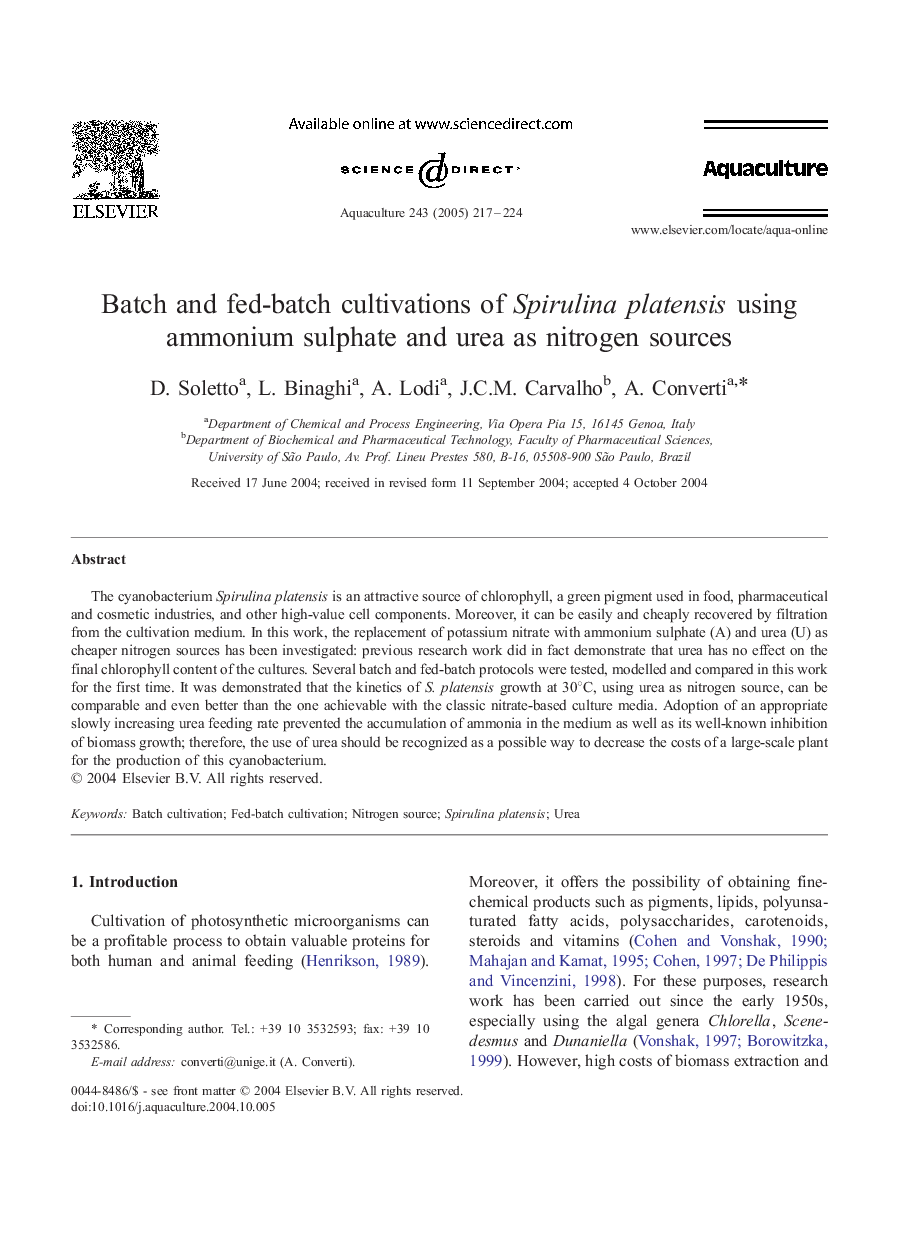| Article ID | Journal | Published Year | Pages | File Type |
|---|---|---|---|---|
| 8975002 | Aquaculture | 2005 | 8 Pages |
Abstract
The cyanobacterium Spirulina platensis is an attractive source of chlorophyll, a green pigment used in food, pharmaceutical and cosmetic industries, and other high-value cell components. Moreover, it can be easily and cheaply recovered by filtration from the cultivation medium. In this work, the replacement of potassium nitrate with ammonium sulphate (A) and urea (U) as cheaper nitrogen sources has been investigated: previous research work did in fact demonstrate that urea has no effect on the final chlorophyll content of the cultures. Several batch and fed-batch protocols were tested, modelled and compared in this work for the first time. It was demonstrated that the kinetics of S. platensis growth at 30°C, using urea as nitrogen source, can be comparable and even better than the one achievable with the classic nitrate-based culture media. Adoption of an appropriate slowly increasing urea feeding rate prevented the accumulation of ammonia in the medium as well as its well-known inhibition of biomass growth; therefore, the use of urea should be recognized as a possible way to decrease the costs of a large-scale plant for the production of this cyanobacterium.
Related Topics
Life Sciences
Agricultural and Biological Sciences
Aquatic Science
Authors
D. Soletto, L. Binaghi, A. Lodi, J.C.M. Carvalho, A. Converti,
